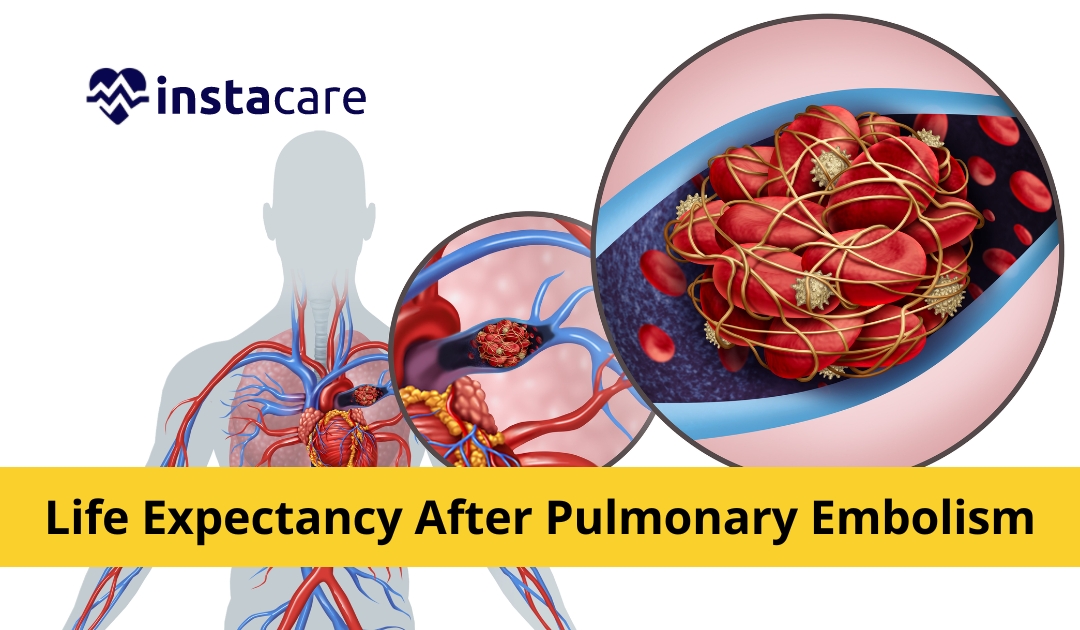Life expectancy is an important factor to consider when evaluating the severity of a medical condition such as pulmonary embolism. Pulmonary embolism occurs when one or more blood clots form in the lungs, and causes symptoms like shortness of breath, chest pain, and lightheadedness. In some cases, it can be fatal — but for many people who experience the condition, their long-term prognosis after diagnosis is unknown. To help shed light on this subject and provide valuable information for those living with pulmonary embolism, we've put together this comprehensive blog post outlining life expectancy statistics following a diagnosis — including survivor rates over time with treatment intervention by gender. We'll also discuss preventive measures that may improve outlooks for patients suffering from pulmonary embolism before delving into other helpful tips on managing your health if you have been diagnosed with the condition.
What is Pulmonary Embolism?
Pulmonary embolism is a serious medical condition that occurs when a blood clot from elsewhere in the body travels through the bloodstream and lodges in the lungs. It can be caused by multiple underlying factors such as deep vein thrombosis, heart rhythm disorders, prolonged immobility, certain surgeries such as knee or hip replacements, birth control pills and other hormonal treatments, and cancer. Symptoms of pulmonary embolism may include chest pain, shortness of breath, lightheadedness/dizziness, rapid heartbeat and coughing up blood. While various tests are used to diagnose this condition which range from imaging scans to selecting an adequate treatment plan based on an individual's risk factors, prompt diagnosis is essential for proper treatment and prevent possible long-term complications or death.
What is the Life Expectancy after Pulmonary Embolism?
Pulmonary embolism is a serious medical condition that occurs when a blood clot travels to the lungs and becomes lodged in an artery or vein. Fortunately, early diagnosis and proper treatment can improve survival rate and life expectancy after suffering from pulmonary embolism. Generally, patients who receive prompt treatment have a better chance of making a full recovery and reducing the long-term risk of complications. Along with adequate medical care and lifestyle changes, such as quitting smoking, maintaining a healthy weight, and exercising regularly, patients may experience an increase in overall quality of life post-recovery. While estimates vary by age group, studies suggest that survivors of pulmonary embolism recover to an average lifespan within two years' time.
Symptoms of Pulmonary Embolism
Pulmonary embolism is a serious condition that requires immediate medical attention. Its primary symptom is difficulty breathing, however it can also present with chest pain, sudden high fever, dizziness or fainting and lightheadedness, as well as coughing up blood. Other symptoms include rapid pulse, feeling of anxiousness and increased sweating. If you are experiencing any of these signs it is important to seek medical care right away so that the underlying cause can be identified and treated properly. Timely diagnosis and treatment of pulmonary embolisms can save lives.
Risk Factors Associated with Pulmonary Embolism
Pulmonary embolism is a serious type of cardiovascular disease that affects millions of people each year. Some of the most common risk factors associated with pulmonary embolism are family history, cigarette smoking, extended periods of immobility, certain medications such as oral contraceptives and hormone therapy for menopause, recent surgery or trauma, advanced age and obesity. In addition to the above mentioned risk factors, it is also important to be aware of potential indicators of pulmonary embolism such as sudden chest pain, shortness of breath that begins without activity or worsens during activity, rapid heart rate and excessive sweating. People should keep track of warning signs and maintain healthy lifestyle habits in order to reduce their risk for developing this serious condition.
View More: Smallest Bone In The Human Body Everything You Need To Know
Treatment of Pulmonary Embolism
Pulmonary embolism is a serious medical condition, caused by the occlusion of one or more pulmonary arteries. Rapid diagnosis and treatment of this condition is necessary in order to prevent further damage to the lungs and other organs. The primary treatment for pulmonary embolism is anticoagulant therapy, which prevents the formation of new blood clots while existing clots are slowly dissolved over time. In some cases, thrombolytic therapy may be used to rapidly dissolve existing clots; however it also comes with a greater potential for side effects. Additional treatments depend on the severity of the patient's symptoms, such as supplemental oxygen or fluids, and can include surgery to remove larger emboli or repair damaged pulmonary arteries. With prompt treatment from experienced physicians and staff, the prognosis for patients with pulmonary embolism can be excellent.
Conclusion
In short, the life expectancy after pulmonary embolism largely depends on the severity of underlying health conditions and how quickly you receive treatment. If you suspect that you may be having a pulmonary embolism, it is important to seek medical attention immediately as they can often be fatal if left untreated. With prompt diagnosis and treatment, many people are able to enjoy long, healthy lives even after a pulmonary embolism.

